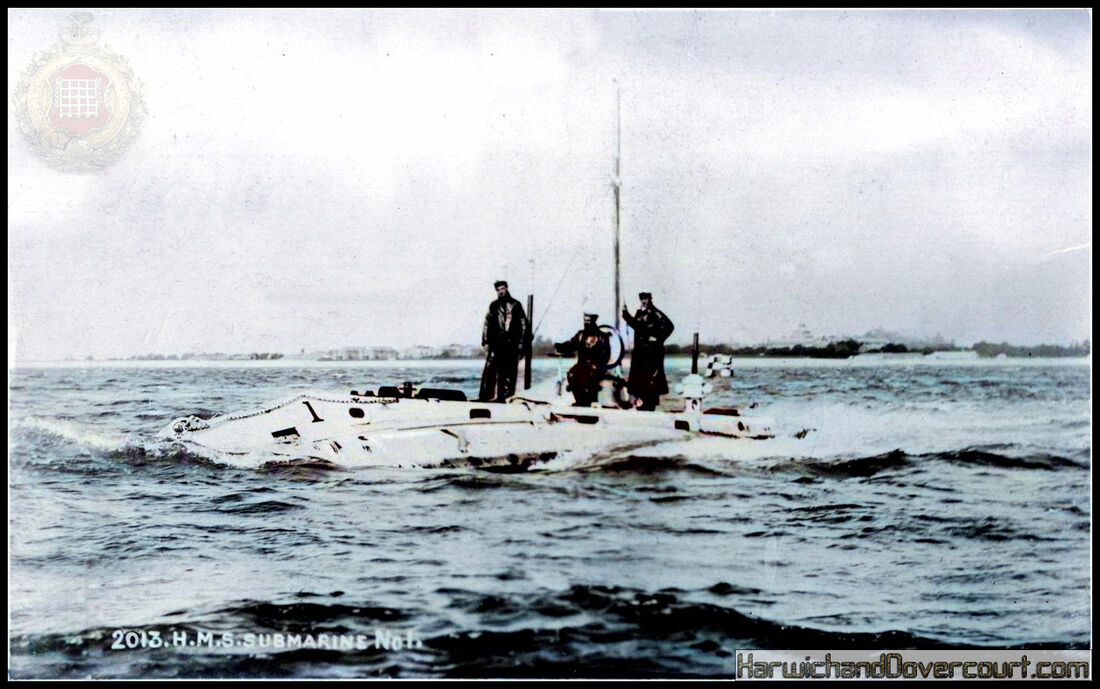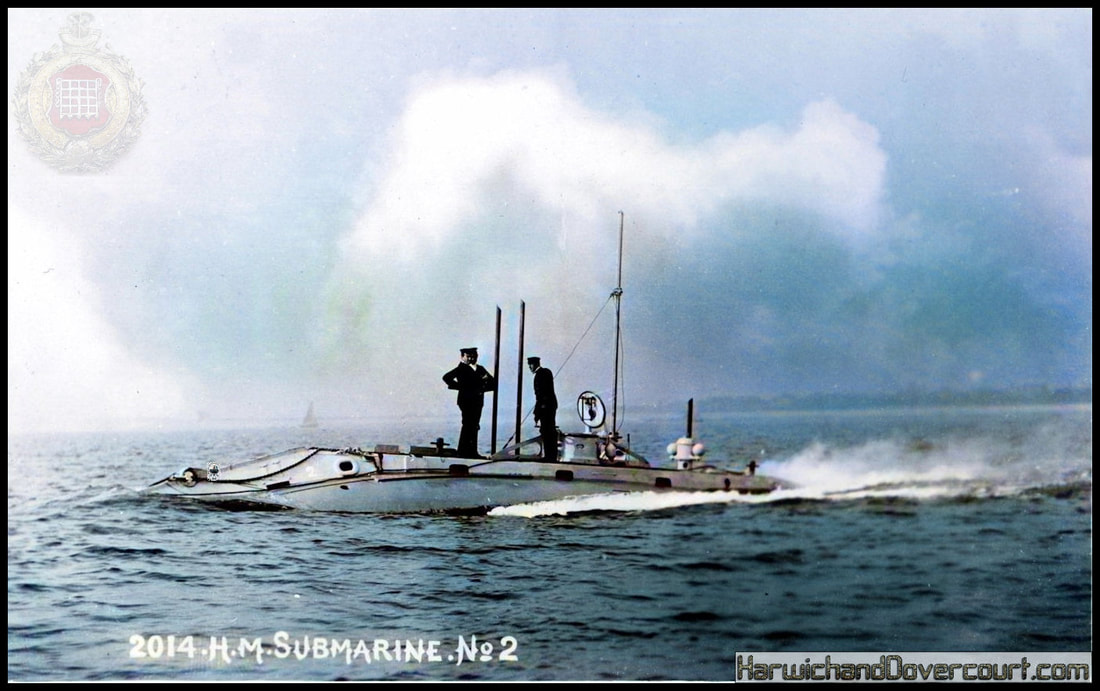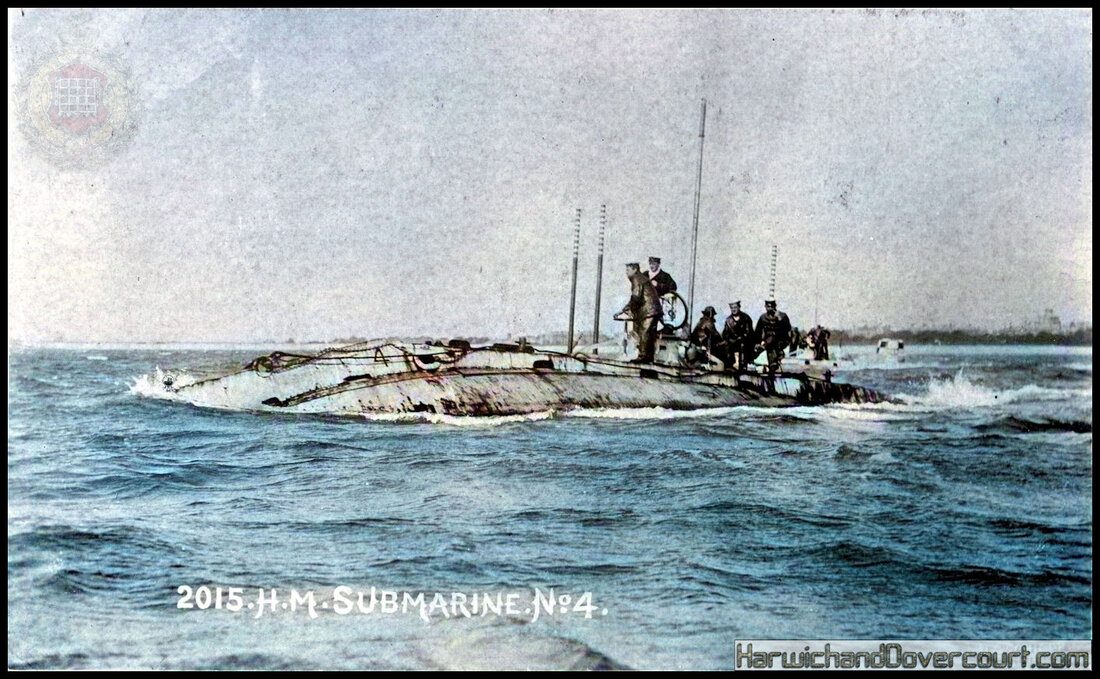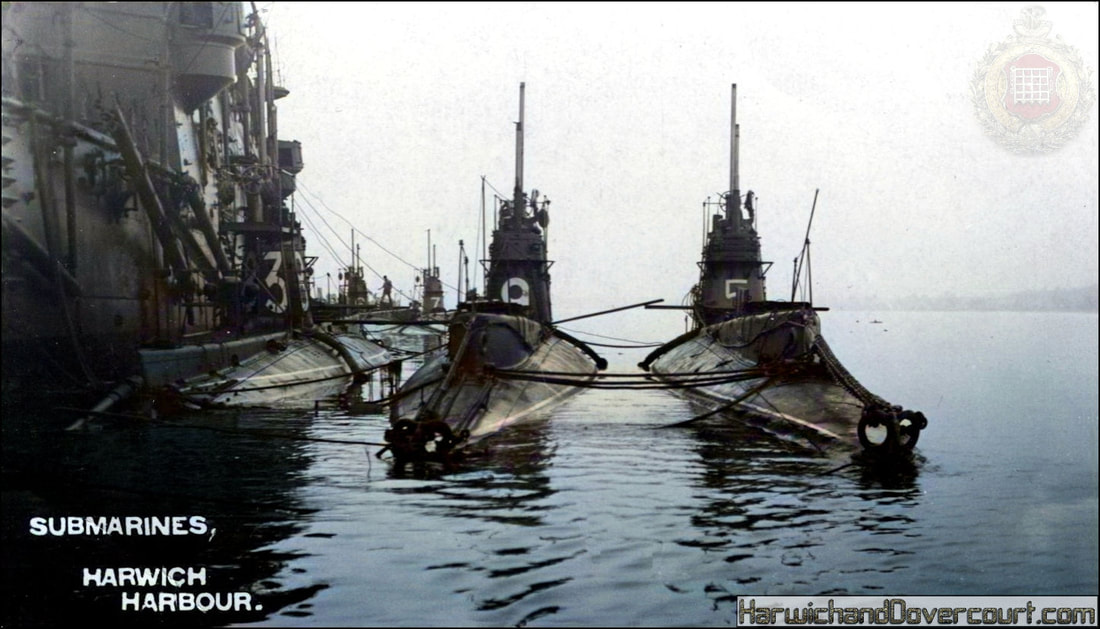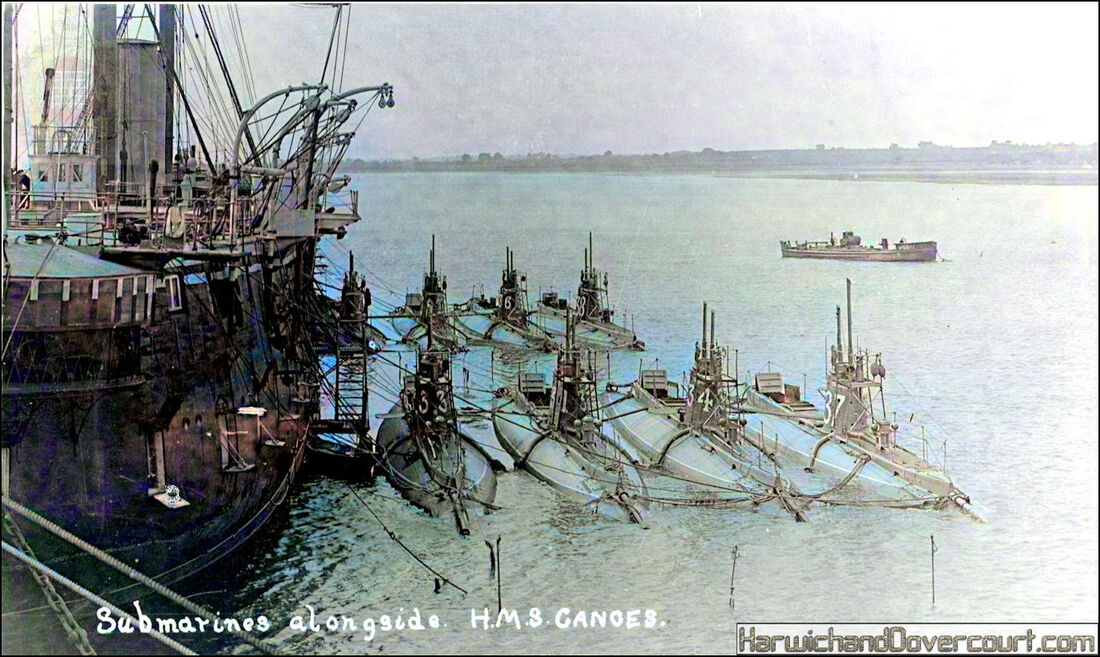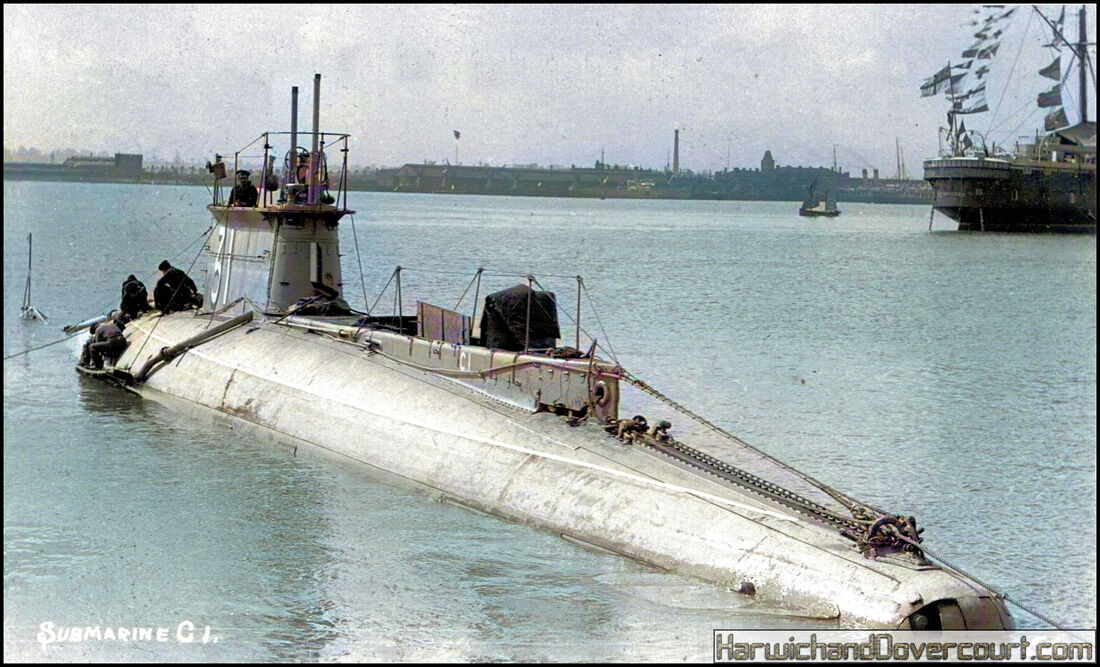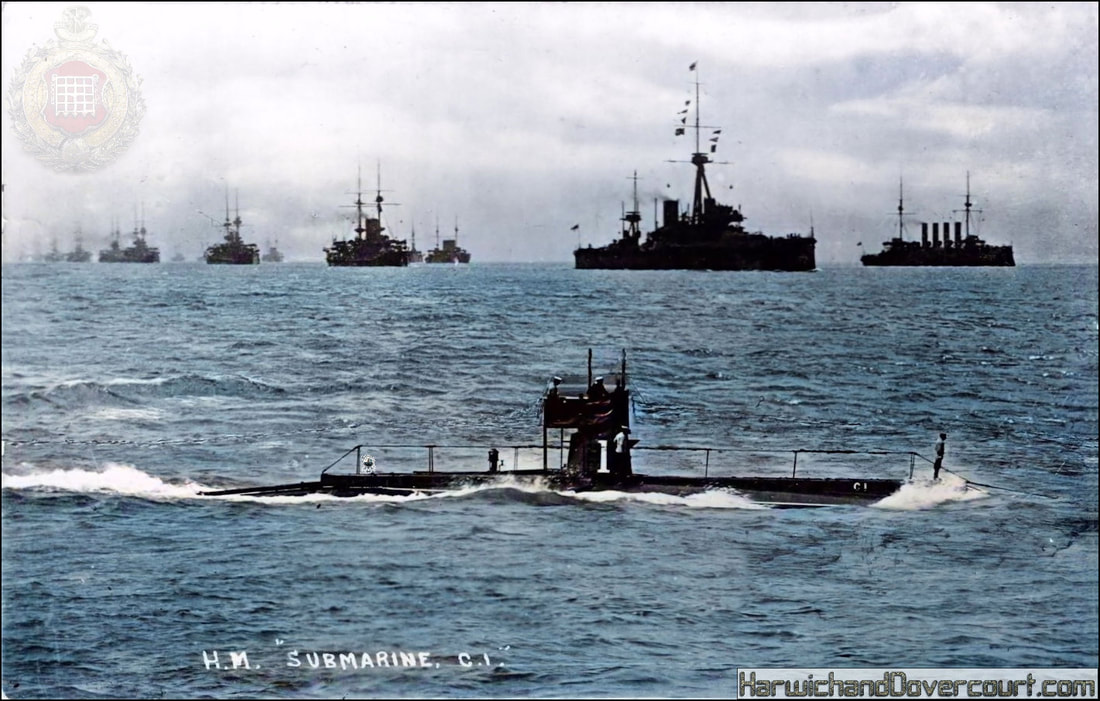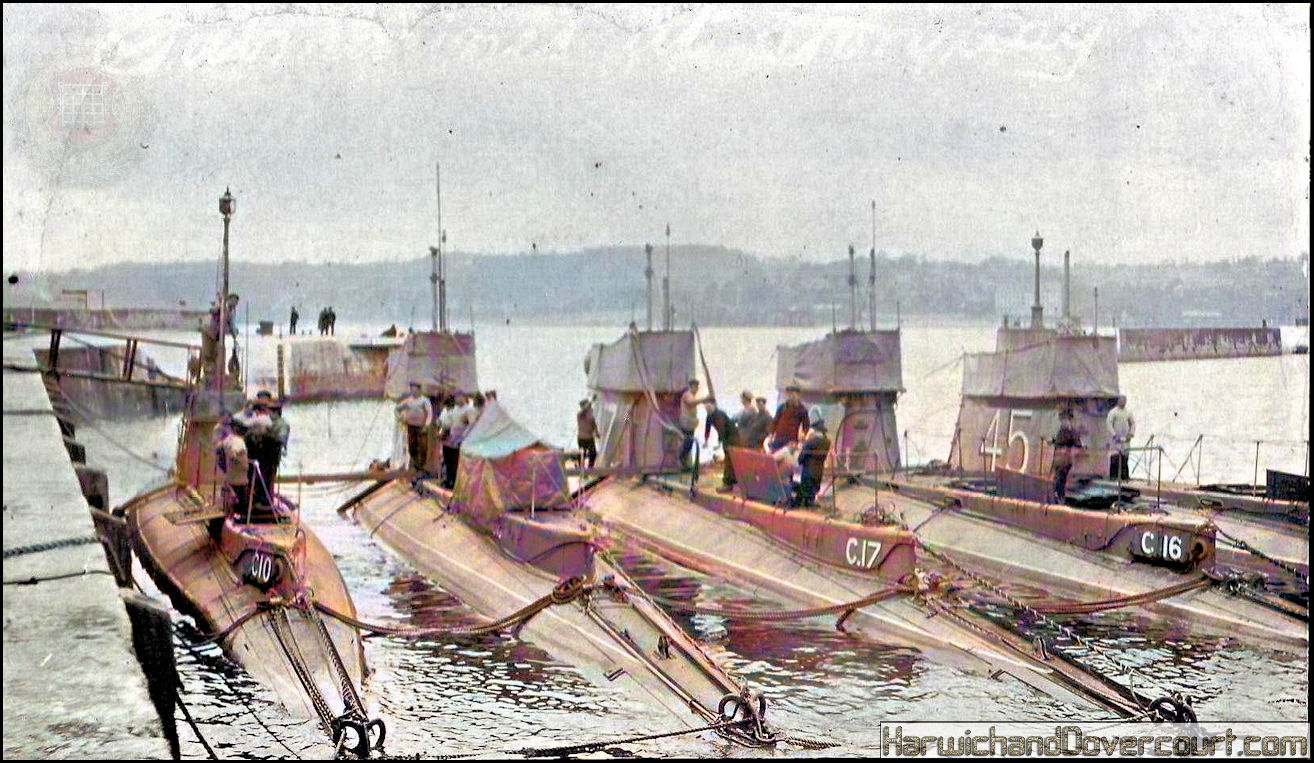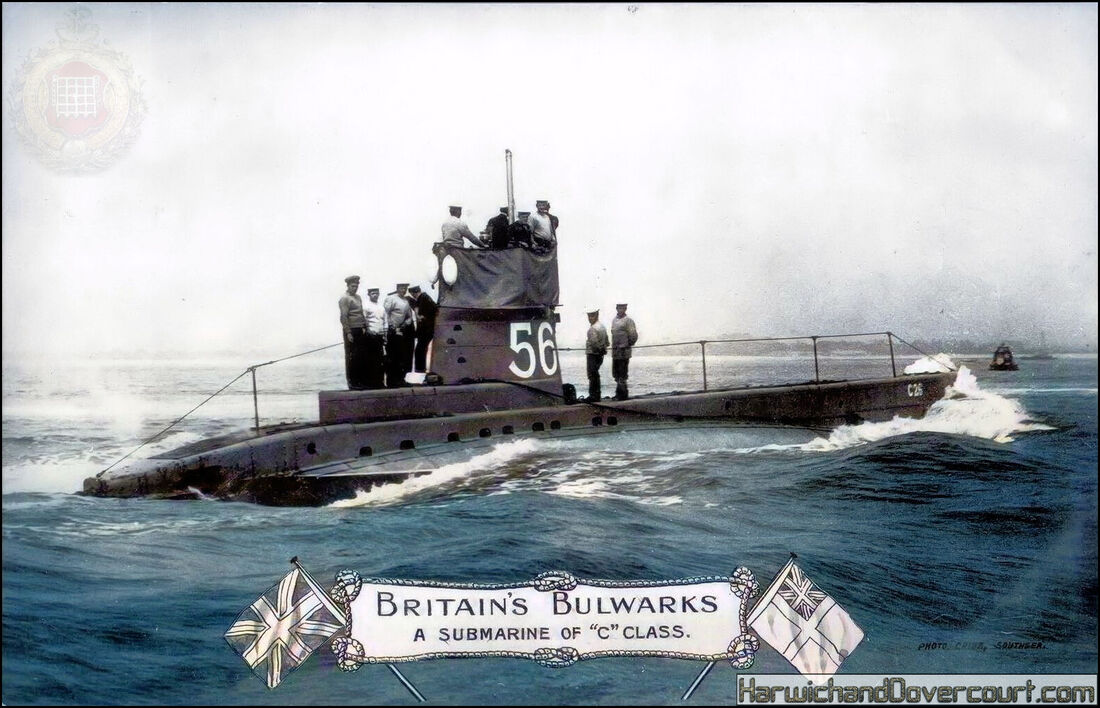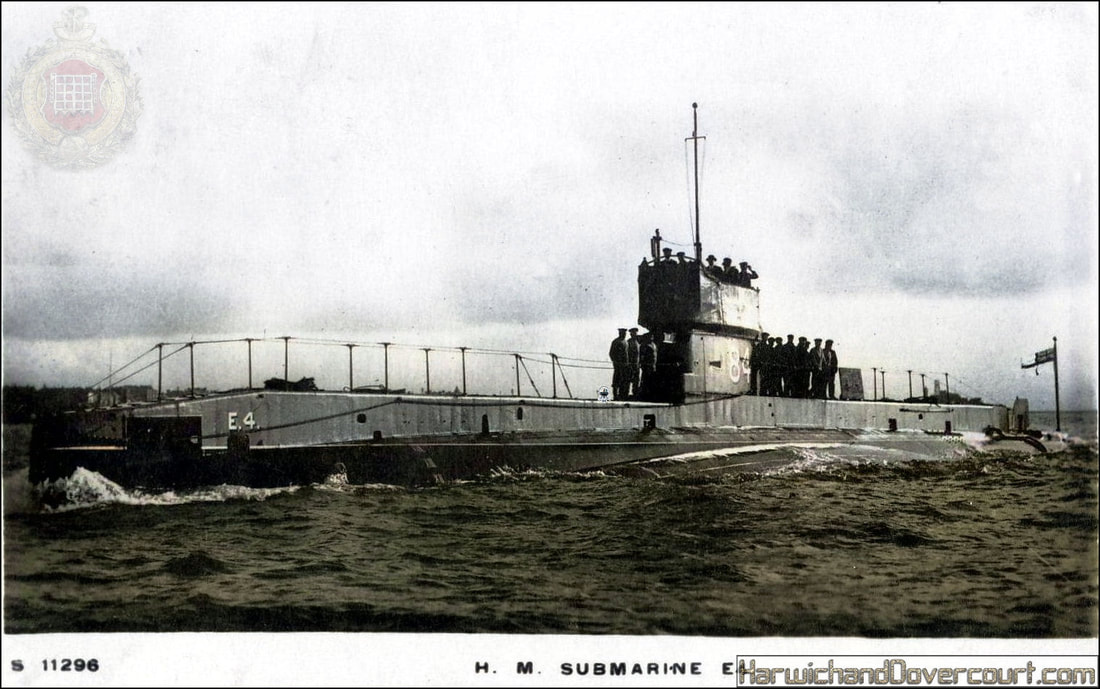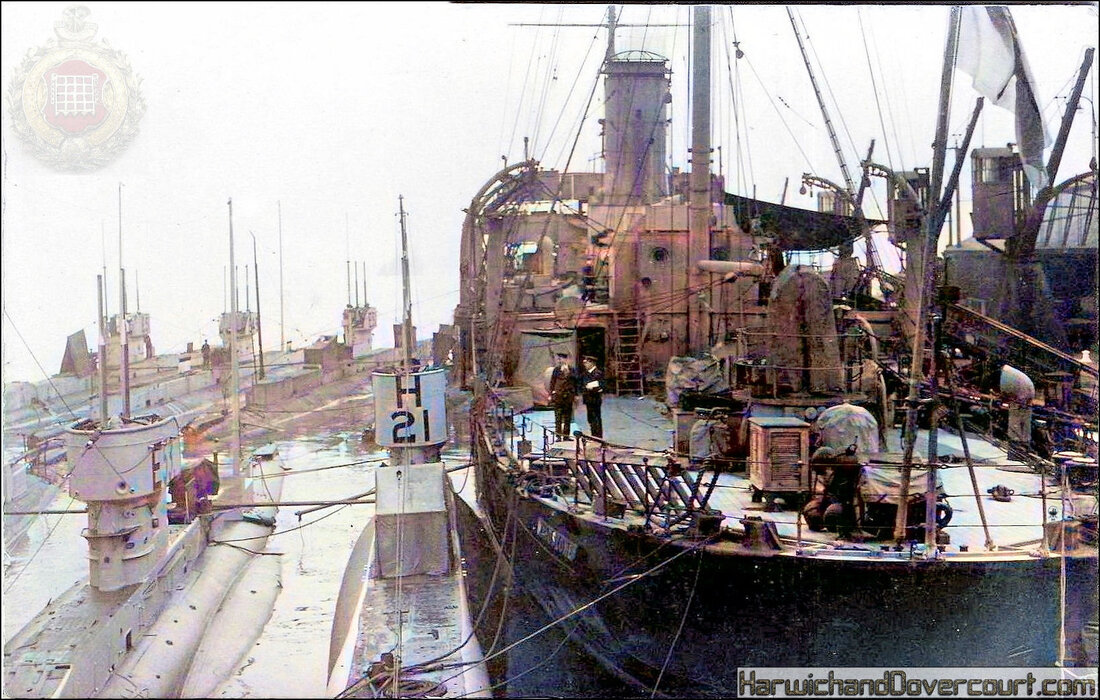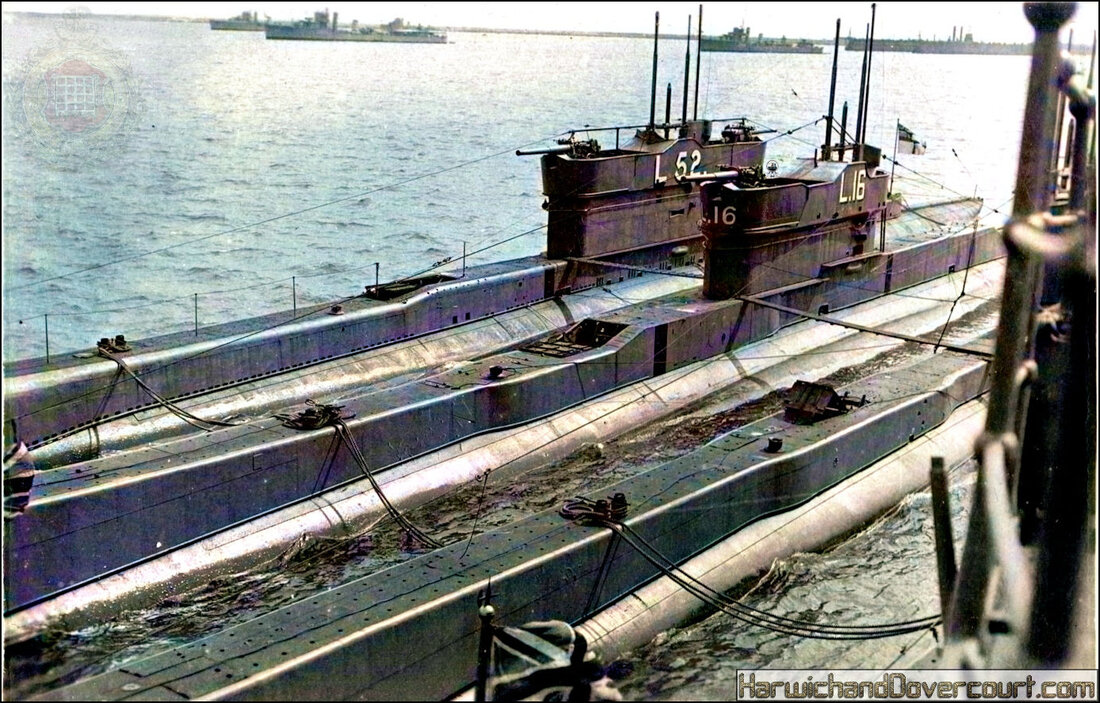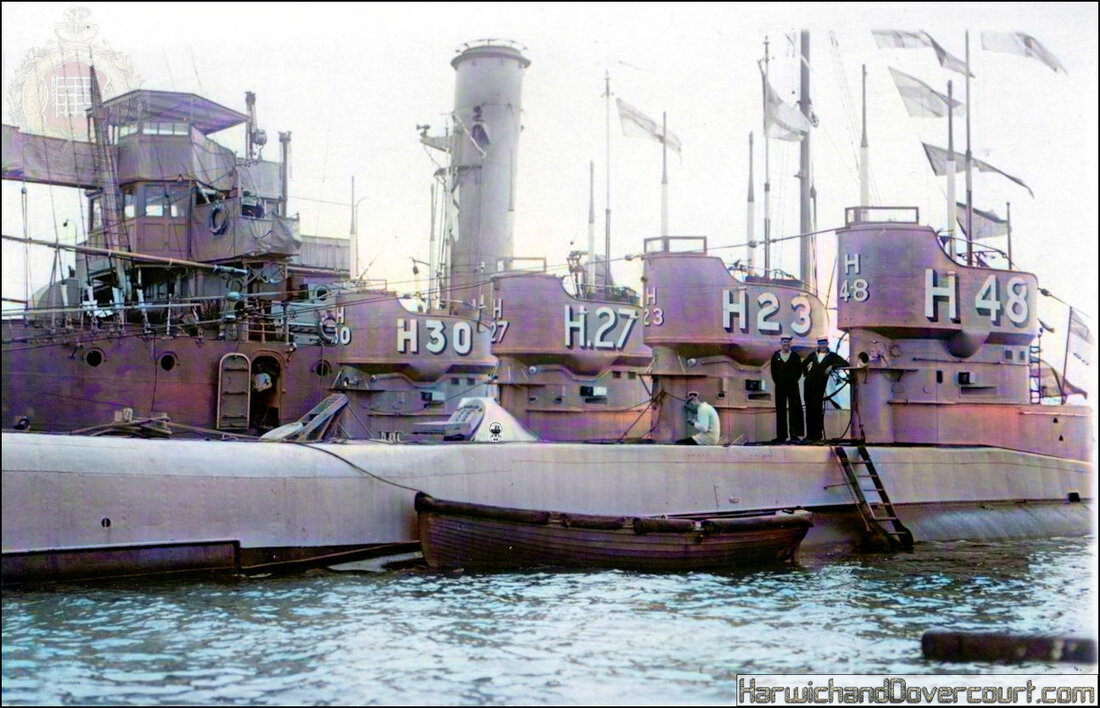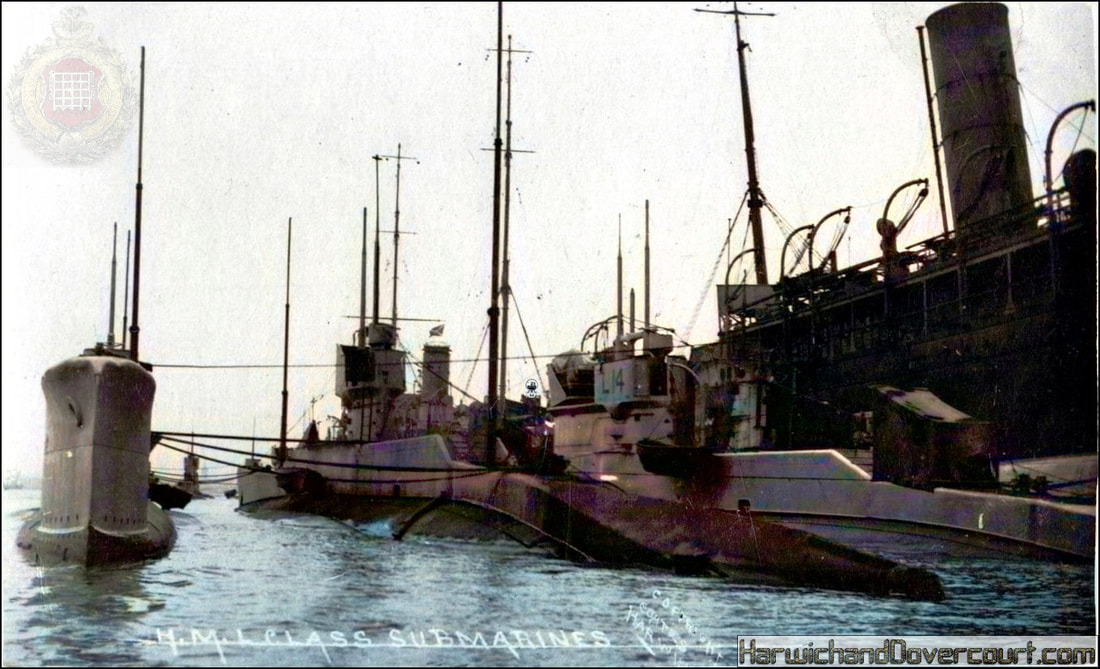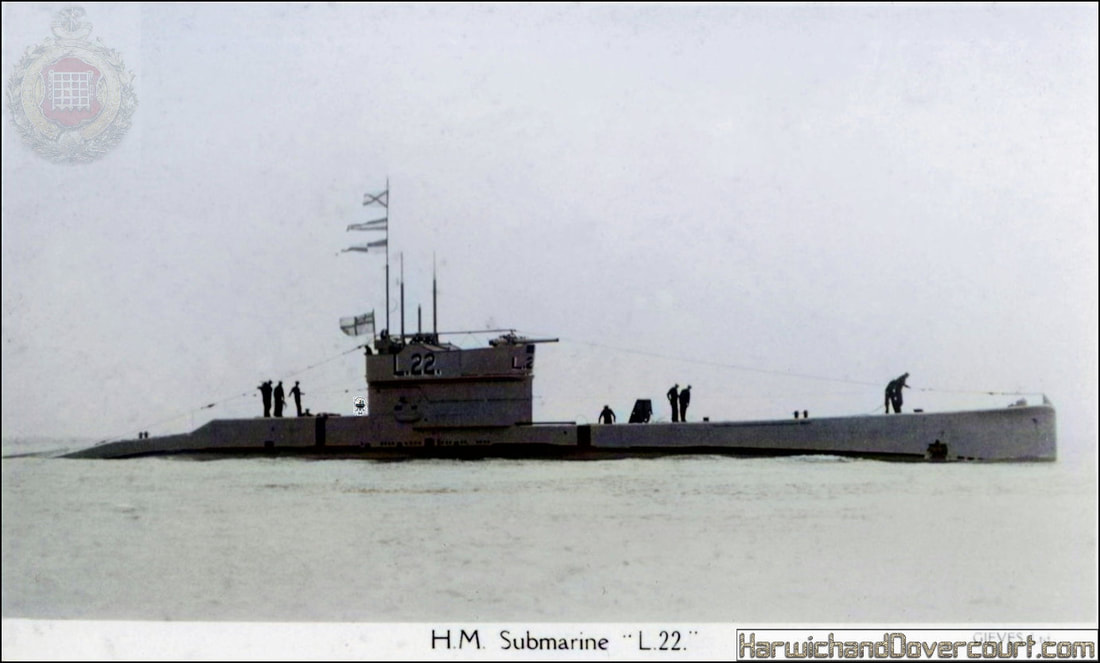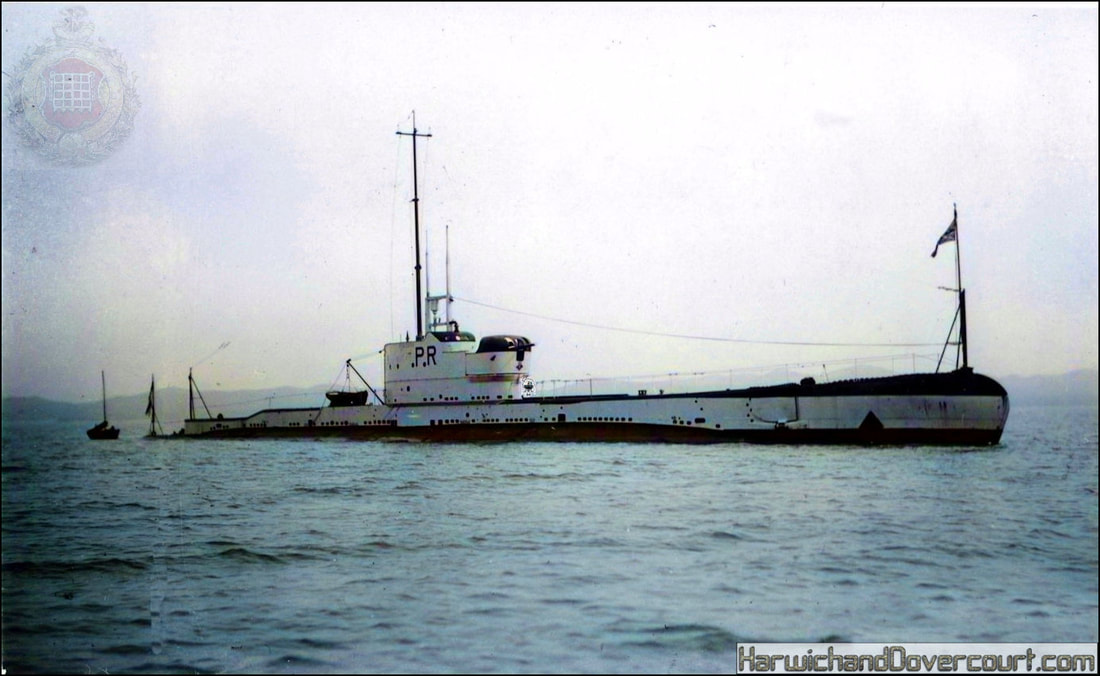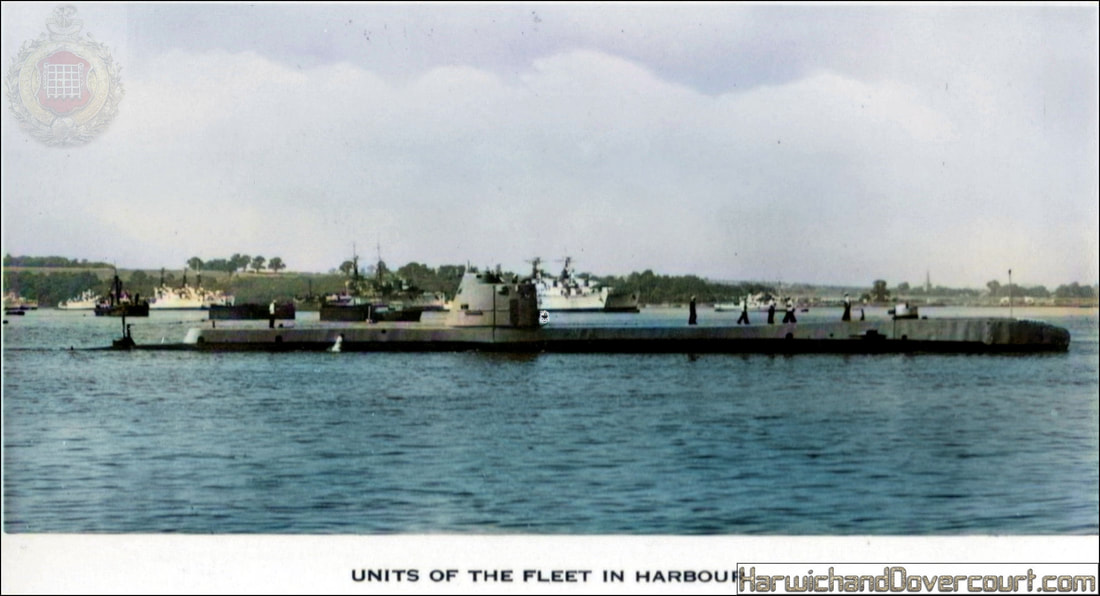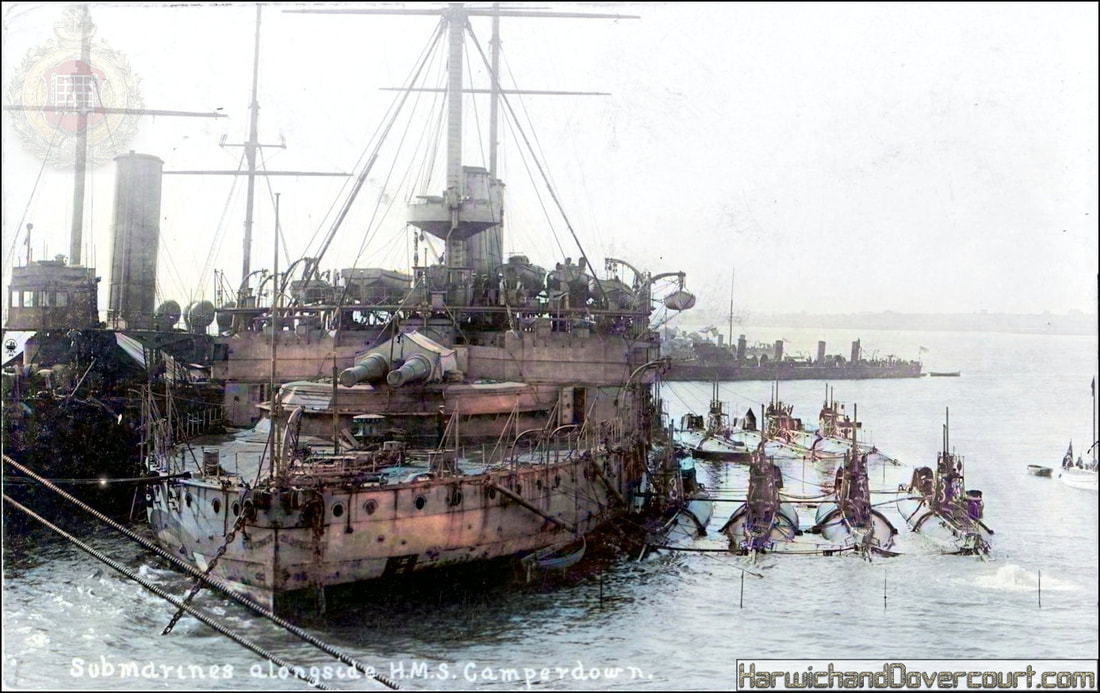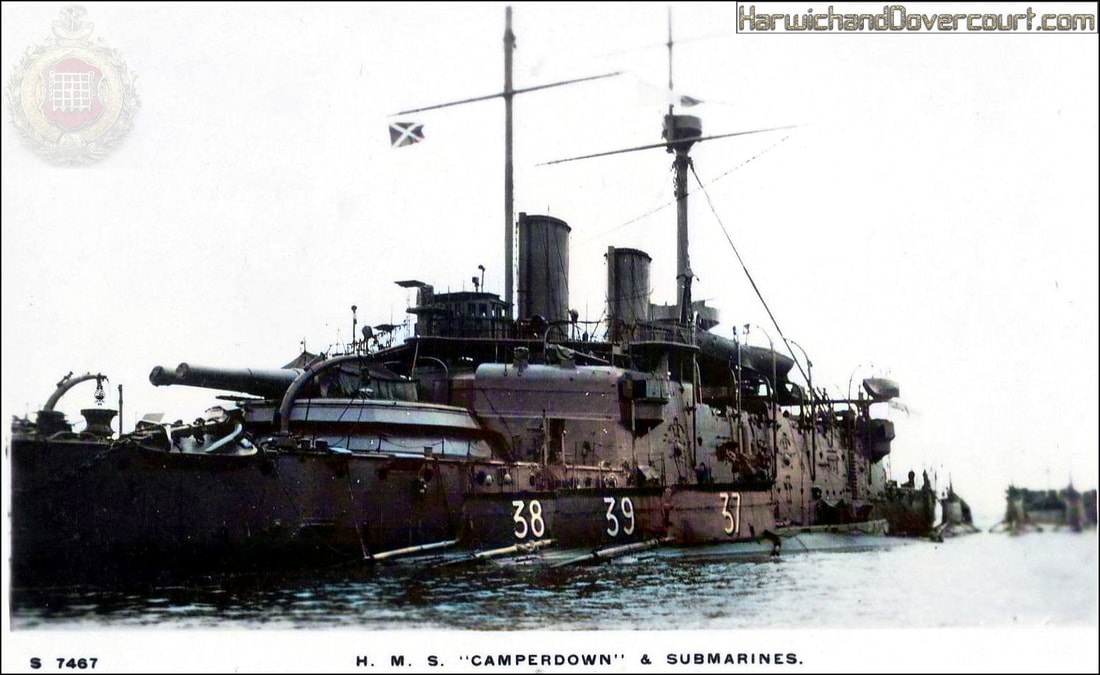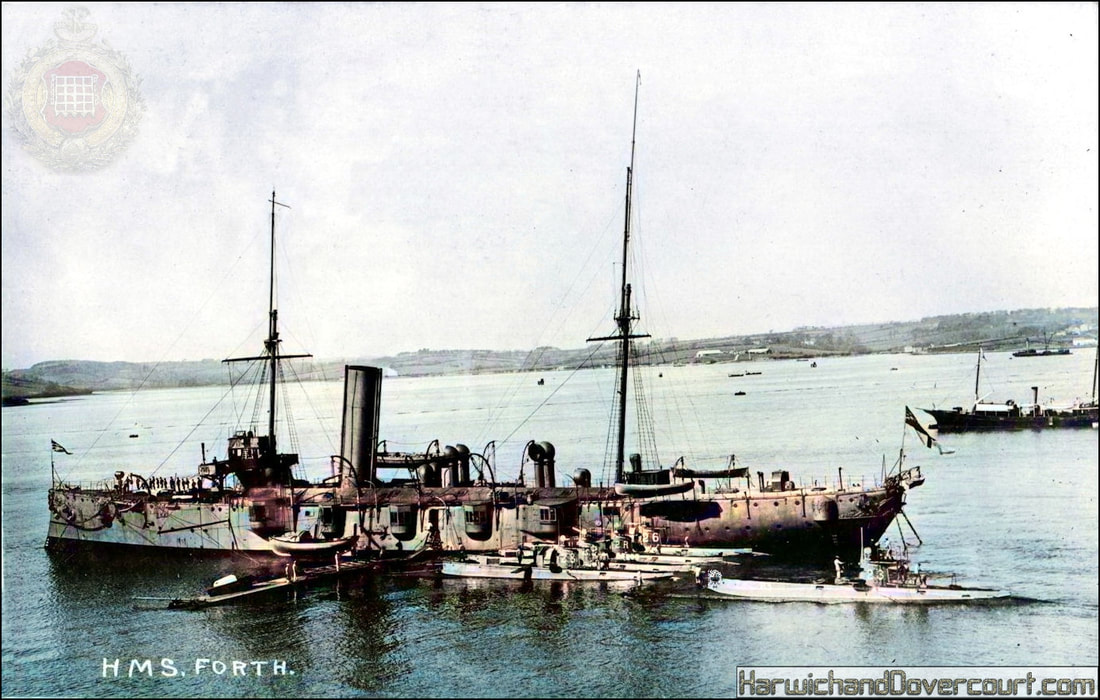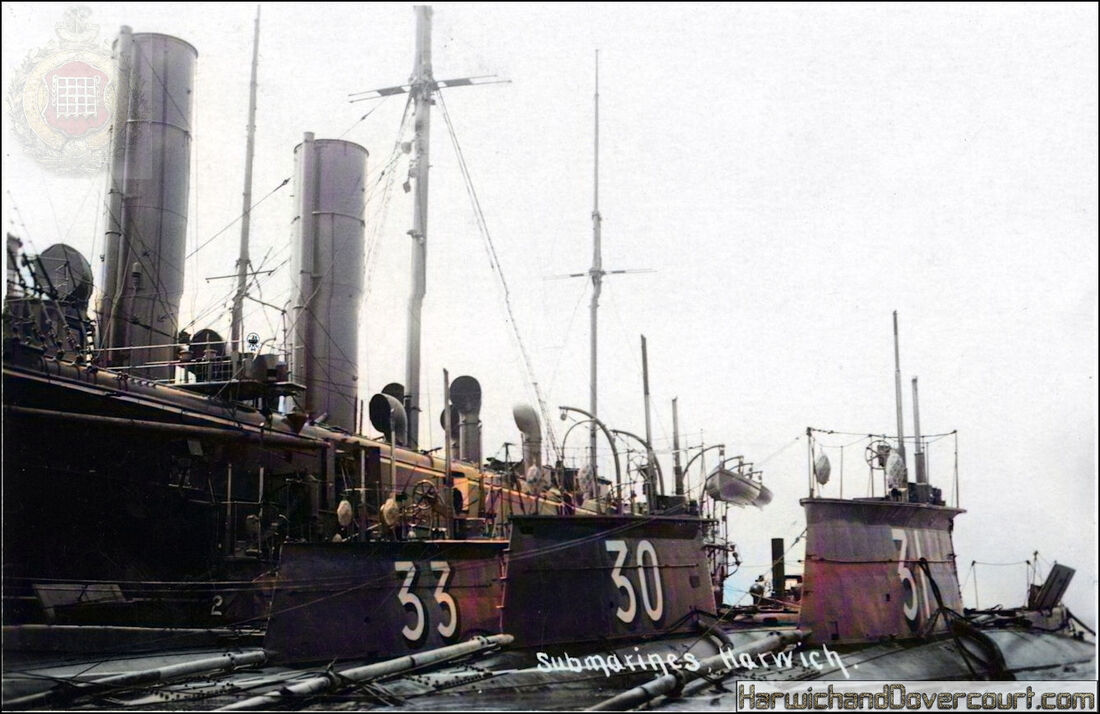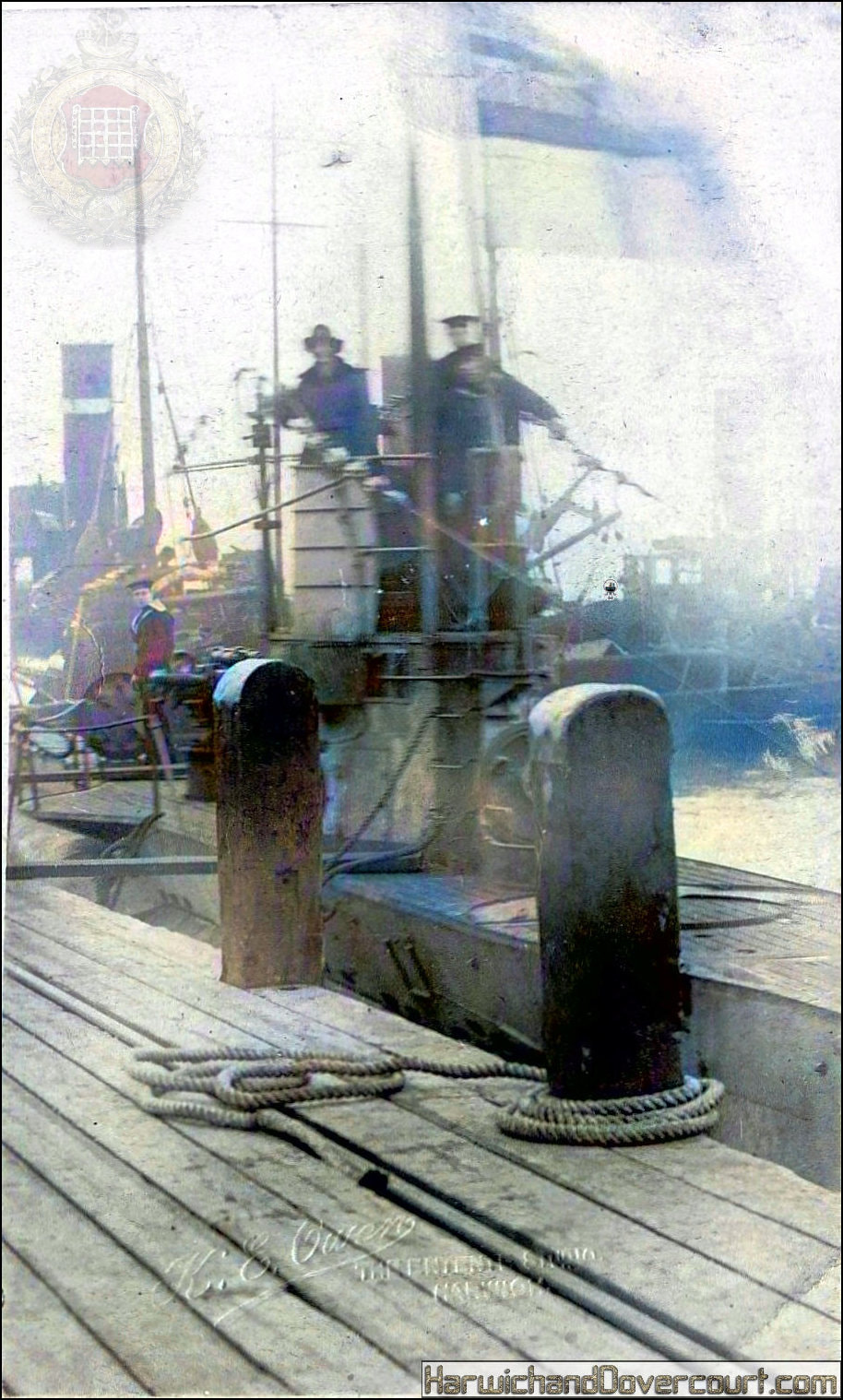Harwich Submarine Depot & Support Craft
Harwich Harbour has a long rich history as a submarine base and a training area. Sadly this Submarine base was also known during WW1, by the "Blue Jackets" (Royal Navy Sailors) as the "Tombstone" depot, owing to the fact, that more boats were lost from here, than any two other bases together.
Submarines first appeared in the Royal Navy around 1902, but the onset of war in 1914 led to major developments in both size and safety.
Submarines first appeared in the Royal Navy around 1902, but the onset of war in 1914 led to major developments in both size and safety.
01 2013 H.M.S. Submarine No 1, (Launched 9th July 1902) Bells H&D FW
This Submarine series by "Bells" cards at the turn of the century, capture early submarine steam trials, often carried out at Harwich
02 2014. H.M. Submarine. No 2, (Launched 15th April 1903) Bells H&D FW
03 H.M. Submarines Including No 2, (Launched 15th April 1903) H&D FW
04 2015. H.M. Submarine. No 4. (Launched 9th June 1903) Bells H&D FW
05 Submarines including No #05 at Harwich Harbour (Launched March 1904) H&D FW
33 Submarines Alongside H.M.S. Ganges, Harwich, Essex (Launched 3rd March 1904) Unknown H&D FW
"B1" Class Submarines (1904) H&D FW
C1 54 Submarine Steam Trials on the "C1", at Harwich, Essex (Launched 10th July 1906) H.R. Tunn & Co H&D FW.
The “C1” submarine “Steam Trials” off the coast at Harwich in 1912
This rare postcard show early submarine “steam” tests off the coast of Harwich in 1912. In the background is Parkeston Quay and to the right is HMS Ganges II. The sender of the postcard “Percy” as seen in another card, appears to be one of the Naval ratings aboard the Sub (which only carried 16 men) At that point in time the submarine was commanded by a Lt. F.E.B. Feilmann (1910 – 1913).
These submarines were built between 1905 – 1910 and were designed for coastal defence work with a relatively limited short-term range. They became known in Naval Circles as ‘Fisher’s Toys’ a reference to Admiral Sir John Fisher who was a keen advocate of the submarine as a weapon of war.
The “C” class submarines were improved versions of the earlier “A” and “B” class submarines built between 1902 – 1906. The “C” Class numbered 38 in total and were built between 1905 and 1910, all but six being built at Vickers, Barrow-in-Furness Shipyard. The other six were built at Chatham. The “B” and “C” Classes were almost identical, being larger versions of the “A” Class, with petrol engines for surface propulsion and batteries for propulsion when submerged. Many improvements were made from B1 to C38, particularly in the superstructure, to improve surface running and seaworthiness.
These infant submarines led eventful lives. The unluckiest vessel of the era was surely the submarine A1. Some of the things that happened in her have served as a warning to all submariners from that day to this. Before delivery, A1 suffered the first explosion in a submarine, this was due to a pocket of hydrogen gas. When on passage off Lands End the crew had to abandon ship when seawater entered the batteries, filling the submarine with choking chlorine gas. When she was eventually delivered to Portsmouth, A1 was berthed in a remote part of the harbour, ‘so that this dangerous craft’ could do as little damage as possible if she blew up. In the summer of 1904, during manoeuvres against the fleet, A1 was dispatched to attack a battleship. When she neared Spithead, the ocean liner SS Berwick Castle made an approach. No one on watch noticed the tiny periscope jutting from the waves, nor did any of her crew feel anything than a slight tremble as the massive ship ran over a small unknown object. When A1 failed to report that night, it was realised that a disaster had occurred. Eleven men lost their lives in this tragedy, which caused great concern throughout the country.
The early years of submarine building were a time of innovation: In 1908, approval was given to fit C12 to C16 with ‘airlocks’ or ‘air-traps’ as they were sometimes known, divided into three airlocks, with a fourth fitted on the starboard side, the enclosed spaces had stowed in them sixteen diving helmets, one for each member of the crew. The escape route was through the torpedo hatch. These airlocks were subsequently fitted to all B and C Class submarines. The first submarine to carry a boat appears to have been C1, which had a 10-foot berth on boat, a practise that was adopted for the remainder of the class. In 1905, the hitherto unknown dangers of petrol vapours caused an explosion in A5, which killed her commander and several others and led to the move to adopt diesel engines, which used heavy oil with a higher flash point and A13 was fitted with an experimental diesel engine for trials at sea. During these trials, the B and C Class vessels continued to be fitted with the same 16-cylinder Wolseley petrol engine as in A5 to A12, but now made by Vickers and called the Vickers engine. In C19 to C38 the number of cylinders was reduced to twelve. Following the trials in A13, diesels were adopted for the D Class and the use of petrol engines came to an end.
This rare postcard show early submarine “steam” tests off the coast of Harwich in 1912. In the background is Parkeston Quay and to the right is HMS Ganges II. The sender of the postcard “Percy” as seen in another card, appears to be one of the Naval ratings aboard the Sub (which only carried 16 men) At that point in time the submarine was commanded by a Lt. F.E.B. Feilmann (1910 – 1913).
These submarines were built between 1905 – 1910 and were designed for coastal defence work with a relatively limited short-term range. They became known in Naval Circles as ‘Fisher’s Toys’ a reference to Admiral Sir John Fisher who was a keen advocate of the submarine as a weapon of war.
The “C” class submarines were improved versions of the earlier “A” and “B” class submarines built between 1902 – 1906. The “C” Class numbered 38 in total and were built between 1905 and 1910, all but six being built at Vickers, Barrow-in-Furness Shipyard. The other six were built at Chatham. The “B” and “C” Classes were almost identical, being larger versions of the “A” Class, with petrol engines for surface propulsion and batteries for propulsion when submerged. Many improvements were made from B1 to C38, particularly in the superstructure, to improve surface running and seaworthiness.
These infant submarines led eventful lives. The unluckiest vessel of the era was surely the submarine A1. Some of the things that happened in her have served as a warning to all submariners from that day to this. Before delivery, A1 suffered the first explosion in a submarine, this was due to a pocket of hydrogen gas. When on passage off Lands End the crew had to abandon ship when seawater entered the batteries, filling the submarine with choking chlorine gas. When she was eventually delivered to Portsmouth, A1 was berthed in a remote part of the harbour, ‘so that this dangerous craft’ could do as little damage as possible if she blew up. In the summer of 1904, during manoeuvres against the fleet, A1 was dispatched to attack a battleship. When she neared Spithead, the ocean liner SS Berwick Castle made an approach. No one on watch noticed the tiny periscope jutting from the waves, nor did any of her crew feel anything than a slight tremble as the massive ship ran over a small unknown object. When A1 failed to report that night, it was realised that a disaster had occurred. Eleven men lost their lives in this tragedy, which caused great concern throughout the country.
The early years of submarine building were a time of innovation: In 1908, approval was given to fit C12 to C16 with ‘airlocks’ or ‘air-traps’ as they were sometimes known, divided into three airlocks, with a fourth fitted on the starboard side, the enclosed spaces had stowed in them sixteen diving helmets, one for each member of the crew. The escape route was through the torpedo hatch. These airlocks were subsequently fitted to all B and C Class submarines. The first submarine to carry a boat appears to have been C1, which had a 10-foot berth on boat, a practise that was adopted for the remainder of the class. In 1905, the hitherto unknown dangers of petrol vapours caused an explosion in A5, which killed her commander and several others and led to the move to adopt diesel engines, which used heavy oil with a higher flash point and A13 was fitted with an experimental diesel engine for trials at sea. During these trials, the B and C Class vessels continued to be fitted with the same 16-cylinder Wolseley petrol engine as in A5 to A12, but now made by Vickers and called the Vickers engine. In C19 to C38 the number of cylinders was reduced to twelve. Following the trials in A13, diesels were adopted for the D Class and the use of petrol engines came to an end.
C1 54 Submariner of the "C1", Steam Trials at Harwich, Essex (Launched 10th July 1906) H.R. Tunn & Co H&D FW
"C" Class H.M. Submarine C.1. (1906) H&D FW
"C" Class Submarines C5 & C2 alongside H.M.S. Ganges, Harwich (Launched 10th July 1906) H&D FW
C10 Submarines, Harwich Harbour (Launched 15th March 1907) Emeny H&D CIIIW
C12 Submarine Crew, Harwich (Launched 9th September 1907) H&D FW
C26 Britains Bulwarks (Launched 20th March 1909) H&D FW.
S 11296 ~ "E4" HM Submarine (Launched 5th February 1912) H&D FW
E53 Submarine at Harwich Harbour (Launched in 1916) H&D FW
"E" & "H" Class Submarines alongside HMS Maidstone at Harwich.
This Submarine Base was known during the war, by "Blue Jackets" (Royal Navy Sailors) in Submarines as the "Tombstone" depot, owing to the fact, that more boats were lost from here, than any two other bases together.
This Submarine Base was known during the war, by "Blue Jackets" (Royal Navy Sailors) in Submarines as the "Tombstone" depot, owing to the fact, that more boats were lost from here, than any two other bases together.
